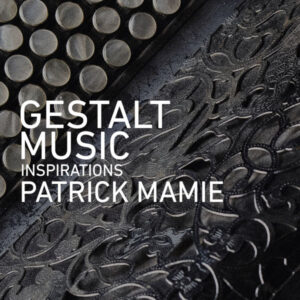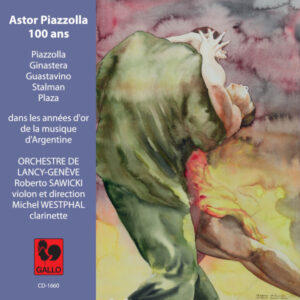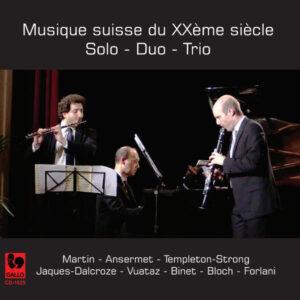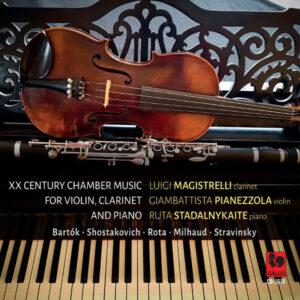Extraits / Excerpts
OTTOCENTO : SCHEIDLER – VANHAL – KÜFFNER – KRÄHMER – DIMITRI ASHKENAZY, CLARINET – JEAN-PAUL GREUB, GUITAR
Christian Gottlieb SCHEIDLER : Sonata in D Major, Op. 21: I. Allegro – Sonata in D Major, Op. 21: II. Romance – Sonata in D Major, Op. 21: III. Rondo – Friedrich BURGMÜLLER : 3 Nocturnes: I. Andantino – 3 Nocturnes: II. Adagio cantabile – 3 Nocturnes: III. Allegro moderato – Johann Baptist VANHAL : 6 Variations on “Nel cor più non mi sento”, Op. 42: I. Andantino – Thema – II. Variation No. 1 – III. Variation No. 2 – IV. Variation No. 3 – V. variation No. 4 – VI. Variation No. 5 – VII. Variation No. 6 – Allegretto – Joseph KÜFFNER : Serenade in C Major, Op. 44: I. Duetto – Andante – Serenade in C Major, Op. 44: II. Menuetto – Allegretto – Serenade in C Major, Op. 44: III. Rondo – Moderato – Ernest KRÄHMER : Introduction & Variations on a Original Theme, Op. 32: I. Introduction – Andante sostenuto – II. Thema – Allegretto – III. Variation No. 1 – IV. Variation No. 2 – V. Variation no. 3 – VI. Variation No. 4 – VII. Variation No. 5 – VIII. Variation No. 6 – IX. Variation No. 7 – Allegro brillante – X. Variation No. 8.
Dimitri Ashkenazy, Clarinet – Jean-Paul Greub, Guitar.
The combination of clarinet and guitar is far less frequent than the more frequently encountered ones of flute-guitar or violin-guitar, even though there are references to it already at the end of the 18th century. Dimitri Ashkenazy and Jean-Paul Greub share an interest in rediscovering its repertoire as well as continuing their search for concert material by commissioning new works. This undertaking began in 2001, and since then the duo has performed in Switzerland, Germany and Russia, playing works from three centuries both original and transcribed, many of them premieres.
Transcriptions for various ensembles are almost a sine qua non of what is commonly known as “salon music”. Written primarily for amusement and entertainment, the original works are usually composed with easy future arrangement for other instruments in mind. This aspect also helps to make the pieces more popular, as more instrumentalists can include them in their repertoire. In this sense, the album presented here is a legitimate undertaking. The artists at the origin of the featured music, themselves both composers and performers, showcased their talents before audiences of aristocrats and bourgeoisie, continually trying to emulate one another’s imagination, ingenuity and charm. The piano had become the instrument of choice, but the guitar also had its place: Easy to transport and ideal for accompanying soloists, it attained a position of honour in the salons. The clarinet, too, left its mark on the period – regularly featured in the symphony orchestra from 1750 onwards, it achieved exalted status in the immortal works of W.A.Mozart. It is no surprise, therefore, that it, too, has its rightful place in this salon repertoire. Certain genres feature prominently: Rondos, romances, serenades, nocturnes, fantasies or variations (often on themes from operas popular at the time). This abundance of forms and their transcriptions illuminate both the musical life of the time and the transition from the baroque to the classical and even romantic periods.
- Categories
- Composers
- Interprets
- Booklet












